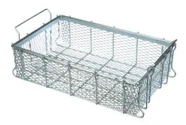Heavy Duty Floor Grating A Comprehensive Overview
Floor grating is an essential component in many industrial environments, offering a combination of strength, safety, and versatile functionality. When we refer to heavy duty floor grating, we are discussing a type of flooring specifically designed to withstand significant weight loads and harsh conditions, all while ensuring safety and accessibility in various applications.
Key Features of Heavy Duty Floor Grating
1. Material Composition Heavy duty floor grating is typically made from materials such as steel, aluminum, or fiberglass. Steel grating is particularly popular for its remarkable strength and durability. It is capable of supporting heavy machinery and equipment, making it suitable for industrial settings such as manufacturing plants, warehouses, and machine shops. Aluminum grating, while lighter, offers excellent corrosion resistance, making it suitable for applications in humid or chemical-laden environments. Fiberglass grating, on the other hand, is non-conductive and resistant to various chemicals, making it an ideal choice for electrical and chemical processing facilities.
2. Load-Bearing Capacity Heavy duty floor gratings are engineered to support heavy loads. The load-bearing capacity is determined by factors such as spacing, thickness, and the type of material used. This capability is critical in environments where heavy machinery or large pallets of materials are frequently transported.
3. Safety Features Safety is paramount in industrial settings. Heavy duty floor grating often features slip-resistant surfaces to reduce the risk of accidents. Additionally, the open design of grating allows for effective drainage and airflow, minimizing the risk of water accumulation or the buildup of harmful fumes.
heavy duty floor grating

4. Versatile Applications Heavy duty floor gratings are used in a variety of settings. Common applications include walkways, platforms, stairs, and drainage covers in industrial plants, factories, ports, and even commercial buildings. They are also employed in outdoor settings, where their durability and resistance to environmental factors make them an ideal choice.
5. Customization Options Manufacturers of heavy duty floor grating often offer customizable solutions to meet specific needs. Options may include different material types, sizes, hole patterns, or coating finishes to enhance corrosion resistance or aesthetic appeal. This adaptability ensures that businesses can find grating solutions tailored to their unique requirements.
Installation and Maintenance
Proper installation is crucial for the performance and longevity of heavy duty floor grating. It is essential to follow manufacturer guidelines to ensure that the grating is securely anchored and that load specifications are adhered to. Periodic maintenance is also necessary to ensure the grating remains in good condition. Regular inspections for wear, corrosion, or damage will help identify issues before they lead to safety hazards or costly replacements.
Conclusion
In summary, heavy duty floor grating is an indispensable element in many industrial and commercial environments. Its ability to support substantial loads, combined with safety features and versatile applications, makes it a preferred choice for flooring solutions. With proper installation and maintenance, heavy duty floor grating can provide a reliable, long-lasting surface for both employees and equipment, safeguarding operational efficiency and workplace safety. Whether you are involved in manufacturing, construction, or any field that requires durable flooring, investing in high-quality heavy duty floor grating is a decision that pays dividends in both safety and performance.
-
The Best Metal Mesh Solutions: Expanded Aluminum Metal vs. Expanded Stainless Steel Metal
NewsSep.10,2024
-
Round Perforated Sheets vs. Hexagonal Perforated Sheets vs. Embossed Perforated Sheet Metal
NewsSep.10,2024
-
Perforated Metal Sheets
NewsSep.10,2024
-
Experience The Excellence Of Stainless Steel Grating
NewsSep.10,2024
-
Discover the Versatility Of Metal Mesh Expanded Forming Machines
NewsSep.10,2024
-
Discover The Advantages Of Steel Grating For Sale
NewsSep.10,2024
Subscribe now!
Stay up to date with the latest on Fry Steeland industry news.

